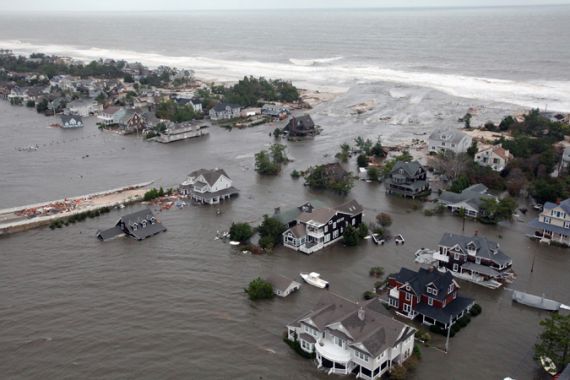Living in a time of uneconomic growth
To achieve a sustainable future we must shift our focus away from maximising GDP and toward improving human well-being.

If you were asked: How would you measure the levels of success in a society? Would it be through environmental protection measures, or the levels of physical health among the population, or how well poverty and inequality had been tackled? They are all worthy measures.
What about measuring society’s success by how much economic activity is created by environmental disasters like oil spills or hurricanes? How about an increase in cancer rates? Are they good ways to measure success?
Keep reading
list of 4 itemsPalestinian Prisoner’s Day: How many are still in Israeli detention?
‘Mama we’re dying’: Only able to hear her kids in Gaza in their final days
Europe pledges to boost aid to Sudan on unwelcome war anniversary
To most people the answer would be no to the latter – people want to see true measures of success, not just economic measurements that track financial activity. So why are we still saddled with using Gross Domestic Product (GDP) to gauge our successes?
Since the 1950s we’ve used the size of the economy as our only indicator of overall progress. By that yardstick the global economy (as measured by GDP) has grown more than three-fold since 1950. However, economic welfare, as estimated by the Genuine Progress Indicator (GPI), which subtracts some costs, has actually decreased slightly since 1978.
So why the divergence? GDP adds together every expense as positive and does not distinguish welfare-enhancing activity from welfare-reducing activity. So environmental disasters like hurricanes and oil spills increase GDP, as does an increase in cancer and divorce rates.
Imagine if a corporation used GDP accounting to do its books. It would be adding all its income and expenses together to get a final number. This would not provide a very good indication of how well the business was doing. Herman Daly, a former senior economist at the World Bank, once commented that, “the current national accounting system treats the earth as a business in liquidation”. He also noted that we are now in a period of “uneconomic growth”, where GDP is growing but economic welfare is not.
GPI, on the other hand, starts with personal consumption expenditures, a major component of GDP, but adjusts it using approximately 25 different components including adjusting for the negative effects of income inequality on welfare, adding positive elements not considered in GDP, such as the benefits of household work, volunteer work, and higher education, and subtracting environmental costs and social costs like the costs of crime, unemployment, and pollution. In doing so, it paints a much more accurate picture of how far we’ve come over the last three decades.
But the picture is a gloomy one. The problem is that since 1978 the costs of economic activity have outweighed the benefits. In many countries, the two elements that most impacted GPI are environmental costs and income inequality. As air and water pollution increase, making breathing and drinking difficult, people’s well-being significantly decreases, regardless of how much money they have. A decrease in well-being also occurs when people see that others are making significantly more money. Large income differences are usually seen as unfair and have been shown to correlate with increased social problems.
Although, every country uses GDP as an indicator of progress, GPI has been estimated for 17 countries, usually by non-governmental entities. These 17 countries contain approximately 53 per cent of the world’s population and 59 per cent of the global GDP. Recently, we synthesized these studies to produce global estimate.
Most countries experience similar patterns. GPI tracks GDP pretty closely as a country develops, but at a certain point, the two diverge. In the United States it happened in the mid-1970s while in China in the mid-1990s. On the global level this point occurred in 1978. One primary function of GPI is to send up a red flag at that point and identify focus areas where societal improvement is necessary.
Interestingly, 1978 is also around the time that the human ecological footprint exceeded the Earth’s capacity to support humanity. Other global indicators, such as surveys of life satisfaction, also began to level off around this time.
GDP was never designed as a measure of economic welfare and GDP growth is no longer an appropriate national policy goal. Although GPI is certainly not a perfect measure, is a far better approximation of human well-being than GDP.
If we hope to achieve a sustainable and desirable future, we need to rapidly shift our policy focus away from maximising production and consumption (GDP) and toward improving genuine human well-being (GPI or something similar). This is a shift that will require far more attention to be paid to environmental protection, full employment, social equity, better product quality and durability, and greater resource use efficiently. These changes are clearly within our grasp, and are underway in several countries and regions. Alternative measures of progress, like GPI, are useful to help chart and guide the course if appropriately used and understood. The future we want is within our grasp, but not while we’re living in a 1950s-inspired fiction.
Dr. Ida Kubiszewski is a Senior Lecturer at the Crawford School of Public Policy at Australian National University. Prior to this she was a Assistant Research Professor and Fellow at the Institute for Sustainable Solutions, at Portland State University. She is the Managing Editor of a magazine/journal hybrid called Solutions.
